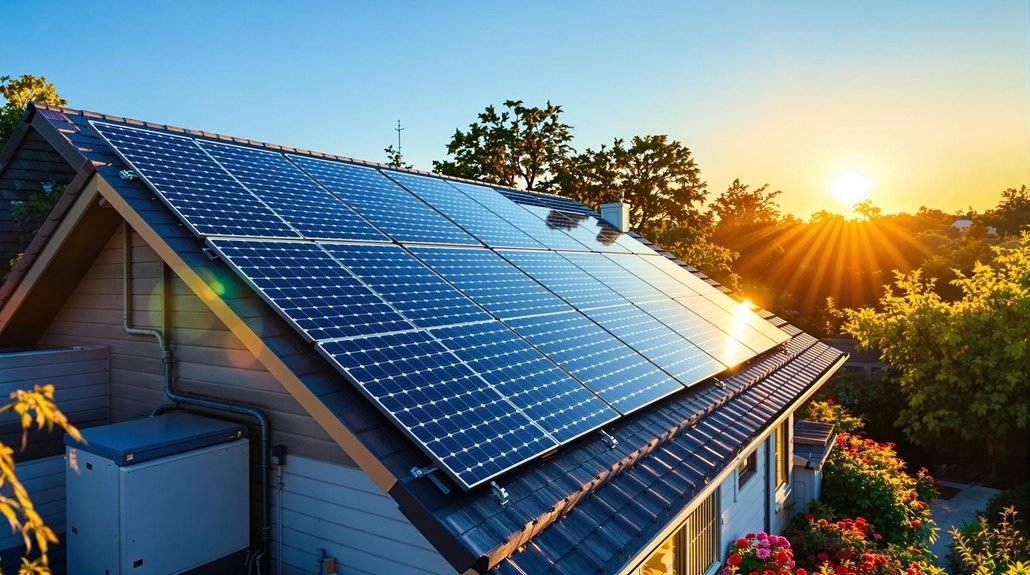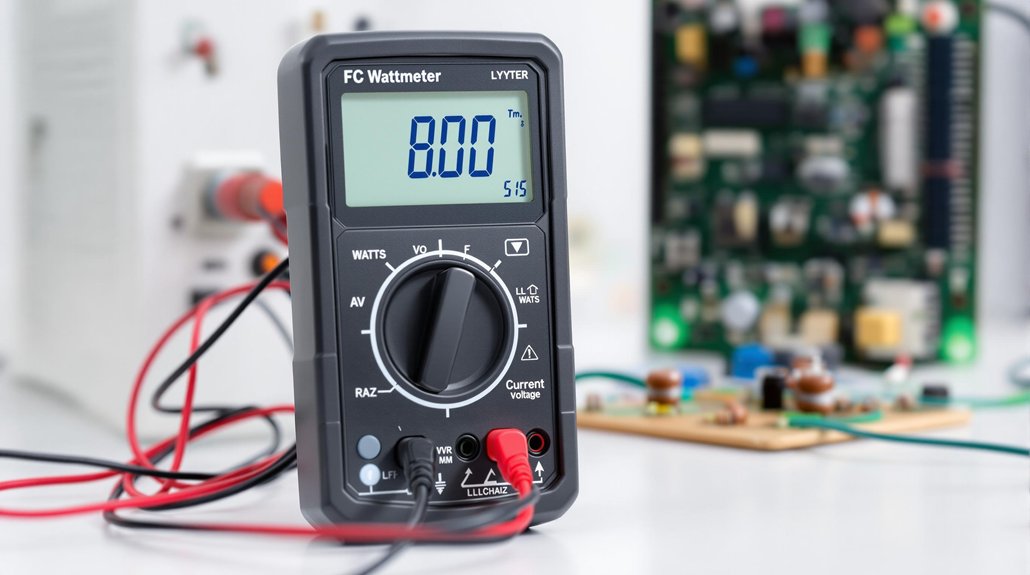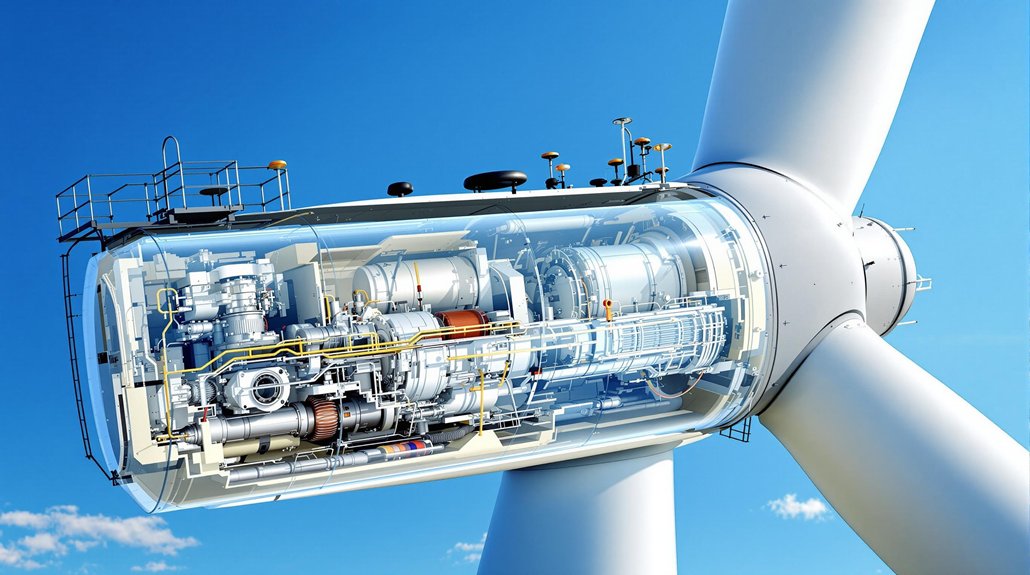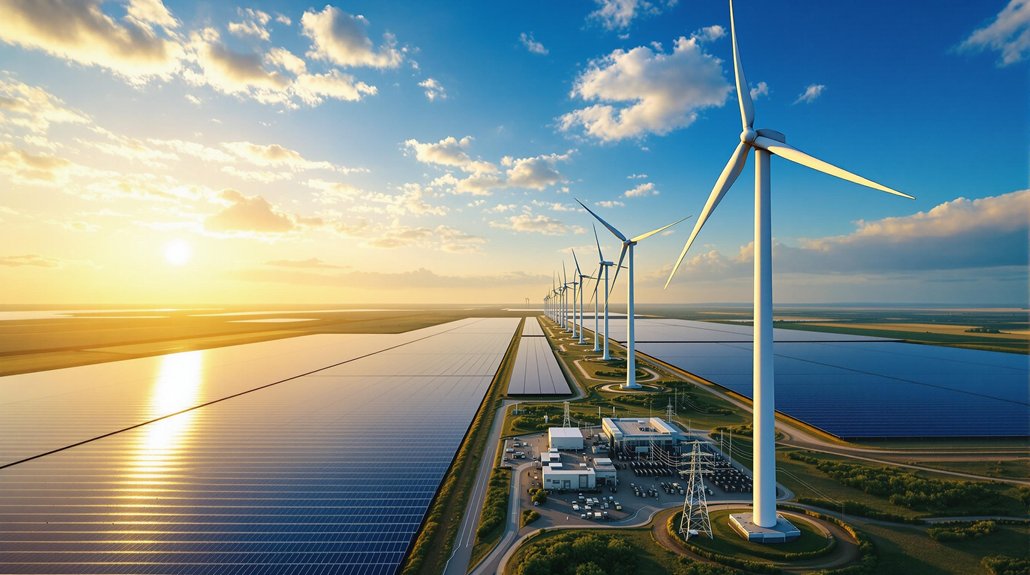Solar panels drive sustainability by generating clean electricity without greenhouse gases. The average home system offsets 200,000 pounds of carbon dioxide over 25 years while creating jobs in a rapidly growing industry. Costs have dropped 89% since 2009, making solar more accessible. Homeowners save thousands on bills, increase property values, and gain energy independence during outages. Modern recycling programs recover valuable materials from old panels. The future looks even brighter with ongoing technological innovations.
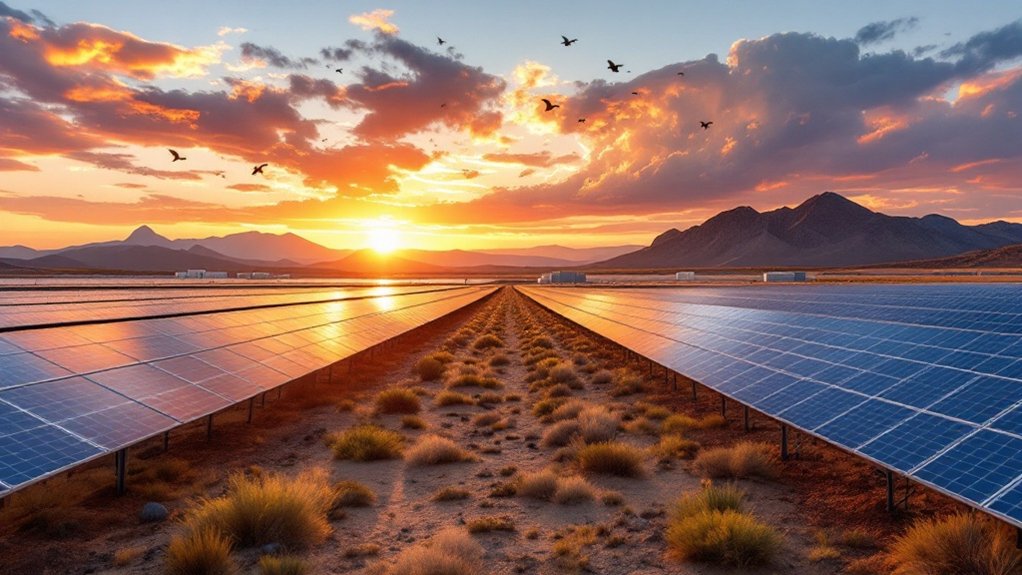
Harnessing the power of the sun, solar panels are transforming how the world generates electricity and paving the way toward a more sustainable future. These silent energy producers create clean electricity without releasing greenhouse gases. The average home solar system can offset about 200,000 pounds of carbon dioxide over its 25-year lifetime. That’s significant when compared to coal-fired power, which produces 20 times more emissions.
Solar panels silently create a sustainable future by generating clean electricity without the greenhouse gases plaguing traditional power sources.
Solar panels help nations reduce their dependence on imported fossil fuels. This decentralized approach to energy creates a more resilient power grid. Homes with solar and battery storage can maintain power during outages. Community solar projects let neighbors share locally-produced energy, while remote areas gain energy independence through solar installations. Modern solar systems utilize energy storage solutions to optimize power generation during daylight hours for use during evening peak demand times.
The economic impact of solar energy is substantial. The industry has created over 230,000 jobs in the United States, growing 167% from 2010 to 2020. As costs fell by 89% between 2009 and 2019, more homeowners installed systems. Many save between $10,000 and $30,000 on electricity bills over the system’s lifetime. Homes with solar panels also typically increase in value by about 4%.
Unlike traditional power plants, solar panels use minimal water. They don’t require mining or drilling operations common with fossil fuels. Solar farms can be built on already disturbed land, avoiding further habitat loss. When panels reach the end of their useful life, recycling programs recover materials like silicon and silver. The proper recycling of solar panels is essential as they may contain hazardous materials that require careful handling. These environmental benefits mitigate climate change through reduced carbon emissions and resource conservation.
Solar energy produces no air pollutants during operation. This reduction in emissions could prevent thousands of premature deaths annually in the U.S. alone. Cleaner air means fewer respiratory and heart problems for people living near power plants.
Innovation continues to improve solar technology. Commercial panels now convert about 22% of sunlight into electricity, with newer technologies promising better results. Smart grid systems help integrate solar power effectively. Solar charging stations for electric vehicles create a cleaner transportation network. Together, these advances are making solar energy an increasingly essential component of a sustainable future.
Frequently Asked Questions
What Is the Average Lifespan of Modern Solar Panels?
Modern solar panels typically last 25-30 years.
Many panels keep working beyond this timeframe, though at reduced efficiency. High-quality panels can function for 40+ years with proper care.
Most manufacturers offer 25-30 year warranties.
Panels degrade about 0.5% to 0.8% annually, meaning they’ll operate at 82.5%-87.5% of original capacity after 25 years.
Environmental conditions, quality, and maintenance affect longevity.
How Much Maintenance Do Residential Solar Systems Require?
Residential solar systems require minimal maintenance. Homeowners should clean their panels 2-4 times per year, though rainfall often handles this naturally.
Visual inspections every few months help identify potential issues. Annual professional servicing is recommended to check electrical connections and components.
Location affects maintenance needs – dusty areas may require more frequent cleaning. Tilted panels typically need less maintenance than flat ones.
Can Solar Panels Be Recycled at the End of Their Lifecycle?
Solar panels are indeed recyclable at the end of their 25-30 year lifecycle.
About 95% of glass and 100% of aluminum components can be recovered through established processes.
The recycling involves disassembly, crushing, thermal processing, and chemical treatment to extract valuable materials like silicon, copper, and silver.
Currently, only 10% of panels are recycled in the US and EU due to high costs and limited infrastructure.
How Do Solar Panels Perform During Extreme Weather Conditions?
Solar panels can handle most extreme weather conditions.
They’re designed to withstand winds up to 140 mph and moderate hail. While snow temporarily reduces output, panels often shed it naturally.
Heat decreases efficiency by 0.3-0.5% per degree above 77°F. Rain actually helps by cleaning dust off panels.
Proper installation and mounting systems are essential for maximizing durability during storms, hurricanes, and heavy snow loads.
What Tax Incentives Are Available for Installing Solar Energy Systems?
Solar power installations qualify for a 30% federal tax credit through 2032.
This credit will decrease to 26% in 2033 and 22% in 2034.
There’s no cap on the credit for most systems.
Many states offer additional incentives like property tax exemptions and rebates.
Businesses can benefit from accelerated depreciation.
Local utilities may provide cash rebates, while some areas offer Solar Renewable Energy Certificates for excess production.
